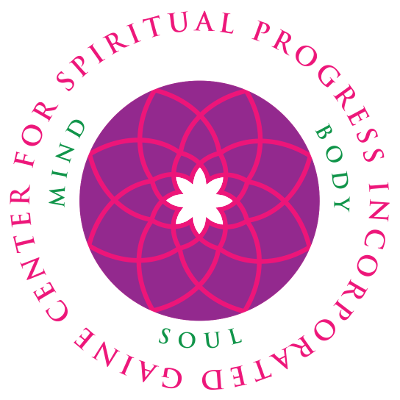Article from Issue #38 (October 7, 2021)
Ascended Master White Tara: Longevity, Health, Healing, and Compassion
by YoWangdu
Tibetans usually think of Tara as having 21 manifestations, as she does in the common Tibetan Buddhist prayer — In Praise of the 21 Taras. In each form she takes a different color — like Blue Tara and Black Tara — and offers a different energy or virtue to help us on our spiritual paths.

Of these 21 Taras, the two most popular are Green Tara and White Tara. Tara’s name in Tibetan is Dolma, and you can see then that White Tara’s Tibetan name, Dolkar, is a short form of Dolma Karpo, which means White Dolma.
Long Life
Tibetans pray to White Tara especially for health, healing and longevity. She offers healing to our wounds, whether it is our bodies or our minds that have been hurt.
The White Tara Long Life Initiation (Dolkar Tsewang) is very popular among Tibetans. At the 2011 White Tara Long Life Initiation by Tritul Jampa Kalden Rinpoche at the US Tibet House, this nice explanation of its purpose was offered:
Benefits of and Reasons for Seeking White Tara Initiation
You might have obstacles in your life that could cause your untimely death. If the obstacles are due to your good karma and merit being exhausted, then in order to prolong your life now and to have longevity in future lives, you need to practice powerful ways to collect a lot of merit, such as taking long life initiations, reciting the mantras of long life deities, saving the lives of animals and people, offering medicine to people and taking care of sick people, offering food, clothing and shelter to the poor people.
If the obstacles in your life and untimely death are due to negative karma, the solution is to purify it. You can also make butter lamp (light) offerings to the Triple Gem. Butter lamp offerings help you develop Dharma wisdom and clairvoyance due to their nature of dispelling the darkness around holy objects.
White Tara is extremely powerful. Tara is very close to sentient beings, like a mother to her children. She is very quick to fulfill our wishes and to grant us happiness and a long life, as well as to help us develop wisdom. By taking refuge in Tara and practicing meditation, visualizations, and having faith, you have the power to remove obstacles to your life and to prolong your life.
Compassion
Tara is closely related to Chenrezig (Avalokitesvara), the Bodhisattva of Compassion. One story of her origin says that she was born from Chenrezig’s compassionate tears.1 People also think of her as the female manifestation of Chenrezig, or his consort.
Though all the manifestations of Tara share the characteristic of compassion through this connection to Chenrezig, it is White Tara who is most closely linked to his essential compassionate nature.
Her pure compassion for our suffering, which is thought to be greater even than a mother’s love for her child, is symbolized in images of White Tara by her white color. Her whiteness also indicates the “undifferentiated truth of the Dharma.”2
In comparison to Green Tara, who is shown seated with one leg on the ground, ready to come to our defense, White Tara is seated in the more meditative diamond lotus position, with both legs folded under her, and her feet facing skyward.3
White Tara has 7 eyes — with an eye in her forehead, and one on each hand and foot — symbolizing her compassionate vigilance to see all the suffering of the world.

Her left hand is in the protective mudra and her right in the wish-granting mudra. In her left hand she usually holds a stem of the Utpala lotus flower with three blossoms. One blossom is represented as a seed, a second as ready to bloom, and the third in full bloom. These represent the Buddhas of the past, future and present.
Often, a small image of Amitabha, a Buddha known for longevity, is portrayed as seated in White Tara’s headdress or slightly above her head.
There are infinite varieties of Tara statues and images in Tibet. (If you wish to experience them for yourself, you can learn how to visit Tibet here.)
There are different ways to pray to White Tara, including the Praises to the 21 Taras prayer and the White Tara Sadhana.
We can also recite White Tara’s mantra, which has a multitude of variations.
White Tara Mantra
First, let’s look at the mantra, then talk about how we can use it.
The White Tara mantra has a number of variations, but a common one in its Sanskrit form is:
OM TARE TUTTARE TURE MAMA AYUH PUNYA JNANA PUSTIME KURU SVAHA.
The Tibetan way to say the mantra is this:
OM TARE TUTTARE TURE MAMA AYUR PUNE GYANA PUNTIN KURU SOHA
What Does the Mantra Mean and How Do You Use It?
The White Tara mantra begins in the same way as the basic Green Tara mantra, with OM TARE TUTTARE TURE. (We leave off the final SOHA).
You can see a deeper explanation on our Green Tara mantra blog post, but one short way to interpret that mantra is “I prostrate to the Liberator, Mother of all Victorious Ones.”
In the White Tara version of the mantra, we add MAMA AYUR PUNE GYANA PUNTIN KURU SOHA.
This is essentially a strong request (even a demand4) for increased longevity, merit and wisdom, where AYUR, PUNE, and GYANA refer to life, merit and wisdom. The White Tara mantra and seed syllables article at the Visible Mantra site, notes that “Mama __X__ puṣṭiṃ kuru means something like ‘make my X increase.'”
In an article on the White Tara mantra on the Wildmind Buddhist Meditation site, they break the mantra down this way:
- mama = mine, means that I would like to possess the following qualities.
- ayur = long life
- punya = merit that comes form living life ethically. [Tibetan: pune]
- jnana = wisdom [Tibetan: gyana]
- pushtim = increase [Tibetan: puntin]
- kuru = do so! do it now!
- svaha = hail, or may blessings be upon [Tibetan: soha]
The mantra is flexible, so if you wish to increase something else, you can just substitute in words for that which you wish to increase, and if you want to pray for your spiritual master’s long life, you can replace the word MAMA (which refers to me or mine) for your master’s name.
So for example, we might pray for the long life of His Holiness the Dalai Lama thus:
OM TARE TUTTARE TURE TENZIN GYATSO AYUR PUNE GYANA PUNTIN KURU SOHA
We can’t think of a better way to use the prayer!


